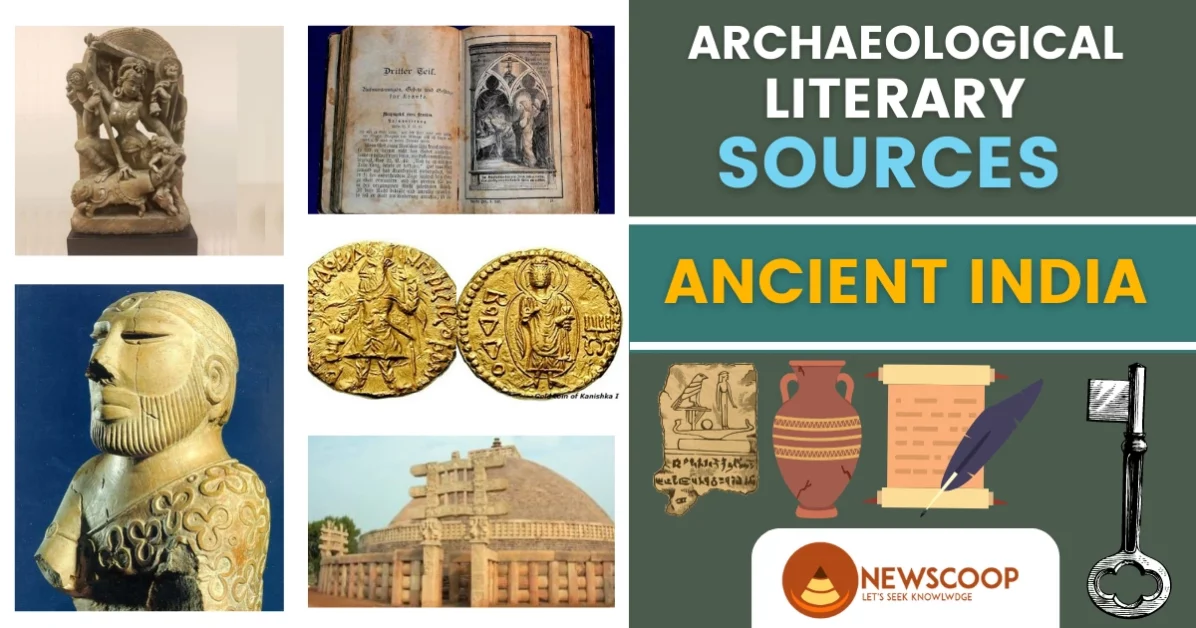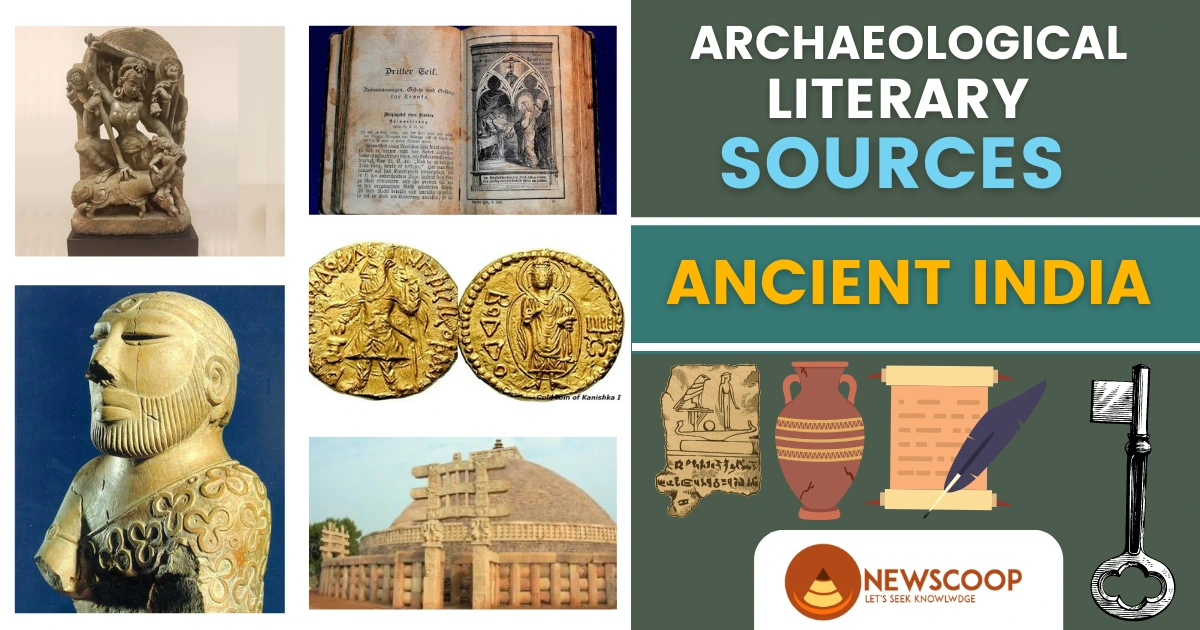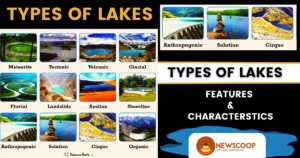If you are searching for Archaeological and literary Sources of Ancient India, then you are at the right place. In this article, we will explore the different types of archaeological and literary sources and their significance in understanding the history of ancient India. We will discuss the prehistoric and historical periods in India, as well as the various empires and dynasties that shaped the country’s past.
Further, we will also examine the limitations and challenges of using these sources and how scholars integrate them to develop a more comprehensive understanding of the past.
| Sources | Description |
|---|---|
| Archaeological sources | – Inscriptions on pillars, rocks, and copper plates |
| – Coins and seals | |
| – Pottery and artifacts | |
| – Monuments and buildings | |
| – Excavations of ancient sites | |
| Literary sources | – Vedas, Upanishads, and other religious texts |
| – Epics such as Ramayana and Mahabharata | |
| – Puranas and other mythological texts | |
| – Buddhist and Jain literature | |
| – Travel accounts of foreign visitors |
What are Archaeological & Literary Sources?
Archaeological and literary sources are two critical sources of information for understanding the history of ancient India. Archaeological and literary Sources provide different types of information about the people and societies that existed in the past. By studying and interpreting these sources, scholars can gain a better understanding of how ancient Indian societies functioned and evolved over time.
Archaeological Sources of Ancient India
What are Archaeological Sources?
Archaeological sources are physical remains of past human activity that have been unearthed through excavation and other archaeological methods. These sources can include artifacts such as tools, pottery, and jewelry, as well as structures such as buildings, tombs, and temples.
Types of Archaeological Sources
There are several types of archaeological sources that provide insights into ancient Indian history. Here are some of the most common types of archaeological sources:

- Artifacts
- Architecture
- Coins
- Inscriptions
- Rock art
- Human remains
| Type of Archaeological Source | Description | Example |
|---|---|---|
| Artifacts | Physical objects created or used by people in the past | Pottery, tools, weapons, jewelry |
| Architecture | Design and construction of buildings and structures | Temples of the Chola dynasty, Brihadeeswara temple |
| Coins | Study of physical remains of Ancient Indian populations | Kushan coins, Gupta dynasty coins |
| Inscriptions | Writings carved or engraved on stone or metal | Ashoka inscriptions, Iron Pillar of Delhi inscriptions |
| Rock art | Images and designs painted or engraved on rock surfaces | Bhimbetka rock art |
| Human remains | Skeletal remains, a mass grave in Harappa | Study of physical remains of Ancient Indian Populations |
1. Artifacts
- Artifacts are physical objects that were created or used by people in the past.
- They can include pottery, tools, weapons, jewelry, and other objects.
- By studying artifacts, archaeologists can learn about the technology, economy, and daily life of ancient Indian societies.
- For example, the excavation of the Indus Valley Civilization sites in northwestern India and Pakistan has yielded a wealth of artifacts such as pottery, beads, and tools.
- The pottery found at these sites provides evidence of the skillful craftsmanship of the people who made them, as well as information about their cooking and storage practices.
- Similarly, the tools and weapons found at these sites give insights into the technological capabilities and military strategies of the ancient Indians.
2. Architecture
- Architecture refers to the design and construction of buildings, temples, and other structures.
- By studying architecture, archaeologists can understand the technological and engineering capabilities of ancient Indian societies.
- For example, the temples of the Chola dynasty in South India, such as the Brihadeeswara temple in Thanjavur, are renowned for their grandeur and intricate carvings.
- The design and construction techniques used in these temples demonstrate the advanced engineering skills of the Chola architects and engineers.
3. Coins
- Coins were used as currency in ancient India, and they can provide insights into the economic and political systems of the past.
- Coins can also be used to date archaeological sites and understand trade networks.
- For example, the discovery of Kushan coins at archaeological sites in northwestern India provides evidence of the economic and cultural connections between ancient India and Central Asia.
- Similarly, the coins of the Gupta dynasty, which ruled much of northern India in the 4th-6th centuries CE, provide valuable information about the economic policies and trade networks of that time.
4. Inscriptions
- Inscriptions are writings carved or engraved on stone, metal, or other materials.
- They can provide information about the rulers, dynasties, and events of ancient India.
- For example, the Ashoka inscriptions found at several sites across India provide valuable information about the reign of Emperor Ashoka, including his policies on governance and religion.
- Similarly, the inscriptions on the pillars of the Iron Pillar of Delhi, which was erected during the Gupta dynasty, provide insights into the metallurgical skills of ancient Indian craftsmen.
5. Rock Art
- Rock art refers to images and designs painted or engraved on rock surfaces.
- They can provide insights into the beliefs, myths, and artistic traditions of ancient Indian societies.
- For example, the rock art at Bhimbetka in Madhya Pradesh depicts scenes from prehistoric life, including hunting, dancing, and religious rituals.
- The intricate designs and patterns found at the site give us a glimpse into the artistic and creative skills of the people who lived there.
6. Human Remains
- The study of human remains can provide insights into the physical characteristics, health, and lifestyle of ancient Indian populations.
- For example, the study of skeletal remains can reveal information about the diet, disease, and cause of death of ancient Indians.
- The discovery of a mass grave in Harappa, one of the largest cities of the Indus Valley Civilization, has provided insights into the health and living conditions of the people who lived there.
- The study of the skeletal remains found in the grave suggests that the people suffered from malnutrition and infectious diseases, which may have contributed to their early deaths.
Historical Archaeological Sources Examples
The following are some major historical archaeological sources with examples from ancient Indian history:
| Period | Time Period | Type of Archaeological Source | Examples |
|---|---|---|---|
| Prehistoric | 7000 BCE – 2000 BCE | Rock art | Bhimbetka rock shelters |
| Indus Valley Civilization | 3300 BCE – 1300 BCE | Artifacts | Pottery, seals, jewelry |
| Architecture | Harappa, Mohenjo-daro | ||
| Mauryan Empire | 322 BCE – 185 BCE | Inscriptions | Ashoka edicts |
| Architecture | Sarnath pillar | ||
| Gupta Empire | 320 CE – 550 CE | Coins | Gold coins |
| Architecture | Ajanta and Ellora caves | ||
| Chola Empire | 9th century CE – 13th century CE | Architecture | Brihadeeswara temple, Gangaikonda Cholapuram |
| Pallava Dynasty | 3rd century CE – 9th century CE | Architecture | Mamallapuram monuments |
| Rashtrakuta Empire | 753 CE – 982 CE | Architecture | Ellora caves |
| Western Chalukya Empire | 973 CE – 1189 CE | Architecture | Pattadakal temples |
| Hoysala Empire | 1026 CE – 1343 CE | Architecture | Halebidu temples |
| Kakatiya Dynasty | 1163 CE – 1323 CE | Architecture | Warangal fort, Ramappa temple |
| Delhi Sultanate | 1206 CE – 1526 CE | Islamic architecture | Qutb Minar, Jama Masjid |
| Vijayanagara Empire | 1336 CE – 1646 CE | Architecture | Hampi ruins, Virupaksha temple |
Limitations & Challenges of Archaeological Sources of Ancient India
While archaeological sources are invaluable in understanding ancient Indian history, they also have several limitations and challenges. Some of these are:
- Incomplete Information: Archaeological sources often provide only limited information about the society and culture of ancient times. For example, a piece of pottery may reveal only the material and shape of the object, but not its use or significance in society.
- Fragmentary Evidence: The archaeological remains that survive may only represent a small fraction of the material culture of the time. Moreover, these remains may be fragmentary and damaged due to natural decay or human destruction.
- Bias and Subjectivity: The interpretation of archaeological evidence is often subjective and prone to bias. Archaeologists and historians may have different opinions about the meaning and significance of the same artifacts, depending on their own assumptions and biases.
- Chronological Ambiguity: Dating the archaeological evidence accurately is a major challenge. The methods of dating are complex and often rely on various assumptions and interpretations, making it difficult to establish a precise chronology.
- Preservation and Conservation: Preservation of archaeological sites and artifacts is a major challenge. Human activities such as construction and tourism can damage or destroy these sites, and natural factors such as erosion and climate change can also cause damage.
- Lack of Context: The context in which an artifact is found is crucial to its interpretation. However, this context is often lost due to human activities or natural processes, making it difficult to understand the artifact in its original setting.
Importance of Archaeological Sources of Ancient Indian History
Archaeological sources of ancient Indian history are important for several reasons, including:
- Providing physical evidence: Archaeological sources provide tangible evidence of ancient Indian life, including tools, pottery, buildings, and other artifacts. This evidence can reveal important details about the economy, technology, and social structure of ancient Indian societies.
- Complementing literary sources: Archaeological sources can help to corroborate or supplement information found in literary sources such as religious texts, epics, and chronicles. For example, the excavation of the city of Harappa provided physical evidence to support the existence of the Indus Valley Civilization, which was previously only known from written records.
- Revealing a different perspective: Archaeological sources can provide a unique perspective on ancient Indian history that may not be found in literary sources. For example, the design and layout of ancient Indian cities can reveal important information about the social, political, and religious organization of those societies.
- Demonstrating cultural continuity and change: Archaeological sources can help to reveal how cultures and societies in ancient India evolved over time. For example, changes in pottery styles, building techniques, and other artifacts can provide insight into how ancient Indian societies adapted to changes in their environment, technology, and social structure.
- Offering a long-term perspective: Archaeological sources can provide a much longer timeline for the study of ancient Indian history than literary sources. By examining physical evidence from thousands of years ago, archaeologists can trace the development of human societies in India over a much longer period than is possible with written records alone.
- Verification of literary sources: Archaeological sources can be used to verify the accuracy of literary sources. By cross-referencing written records with archaeological evidence, historians can confirm the existence of historical events, people, and places.
- Preservation of cultural heritage: Archaeological sources help in preserving the cultural heritage of ancient India. By excavating and studying archaeological sites, historians and archaeologists can uncover lost aspects of ancient cultures, preserving them for future generations.
Overall, archaeological sources of ancient Indian history are important because they provide tangible evidence of the lives and cultures of ancient Indians, complement literary sources, offer a unique perspective, reveal cultural continuity and change, and offer a long-term perspective on the development of human societies in India.
Literary Sources of Ancient India
What are Literary Sources?
Literary sources are written works that provide information about the past. These sources can include scriptures, inscriptions, chronicles, biographies, and literature. Literary sources can be written in various languages and scripts, and they can provide insights into the social, cultural, political, and economic aspects of the past.
Various Literary Sources of Ancient India
There are various examples of literary sources used in the study of ancient Indian history:

- Vedas
- Upanishads
- Puranas
- Mahabharata
- Ramayana
- Arthashastra
- Manusmriti
- Buddhist and Jain texts
- Tamil Sangam literature
- Greek and Roman Accounts of India
| Literary Source | Time Period | Description | Examples |
|---|---|---|---|
| Vedas | 1500 BCE – 500 BCE | Four collections of hymns, prayers, and rituals. Provide insight into the religious beliefs and practices of ancient India. | Rigveda, Yajurveda, Samaveda, Atharvaveda |
| Upanishads | 800 BCE – 500 BCE | Philosophical texts that discuss the nature of reality and the self. | Brihadaranyaka Upanishad, Chandogya Upanishad, Katha Upanishad |
| Puranas | 400 CE – 1500 CE | Narrative texts that tell the stories of the gods and goddesses of Hinduism. Provide insights into the religious beliefs and practices of ancient India. | Bhagavata Purana, Vishnu Purana, Shiva Purana |
| Mahabharata | 400 BCE – 400 CE | Epic poem that tells the story of the Kurukshetra War and the events leading up to it. | Bhagavad Gita, Harivamsa, Ashvamedhika Parva |
| Ramayana | 400 BCE – 400 CE | An epic poem that tells the story of the Kurukshetra War and the events leading up to it. | Uttara Kanda, Lavakusha, Yuddha Kanda |
| Arthashastra | 300 BCE – 1500 CE | Treatise on statecraft, economics, and military strategy. Provides insight into ancient Indian political and economic systems. | Kautilya’s Arthashastra |
| Manusmriti | 200 BCE – 200 CE | Text that outlines the laws and social customs of ancient India. | Yajnavalkya Smriti, Narada Smriti, Parashara Smriti |
| Buddhist texts | 500 BCE – 500 CE | Collection of texts that record the teachings of the Buddha and his disciples. Provide insight into the origins and development of Buddhism. | Dhammapada, Sutta Pitaka, Vinaya Pitaka |
| Jain texts | 500 BCE – 500 CE | Collection of texts that record the teachings of the Jain Tirthankaras and their disciples. Provide insight into the origins and development of Jainism. | Agamas, Tattvartha Sutra, Samayasara |
| Tamil Sangam literature | 300 BCE – 300 CE | Collection of Tamil literature that includes poems, epics, and grammar works. Provides insight into ancient Tamil society and culture. | Tolkappiyam, Manimekalai, Silappatikaram |
| Greek & Roman accounts of India | 300 BCE – 400 CE | Accounts written by Greek and Roman scholars and historians who visited India or wrote about India based on second-hand knowledge. Provide insight into ancient India from an outsider’s perspective. | Megasthenes’ Indica, Arrian’s Indica, Pliny the Elder’s Natural History |
1. Vedas
The Vedas are considered the oldest literary sources of ancient Indian history. These are a collection of four religious texts, namely Rigveda, Yajurveda, Samaveda, and Atharvaveda. The Vedas are written in Vedic Sanskrit and are considered to be the source of Hinduism.
- Historical Significance: The Vedas provide valuable information about the social, cultural, and religious practices of the Vedic period. They give us insight into the early Aryan society, their religious beliefs, and the political and economic conditions of that time.
- Content: The Vedas contain a variety of hymns, prayers, and rituals that are dedicated to various gods and goddesses. They also contain information about the religious practices of the Vedic people, including the sacrifices and ceremonies they performed.
- Example: One of the most famous hymns from Rigveda is the Purusha Sukta, which describes the creation of the universe and the origin of the four varnas or castes in Hindu society.
- Limitations: The Vedas were written in a highly symbolic language and are difficult to interpret without a deep understanding of Vedic culture and religion.
- Importance: The Vedas are considered the foundational texts of Hinduism and are still widely studied and revered by Hindus today. They provide a unique glimpse into ancient Indian society and culture.
- Time Period: The Vedas are believed to have been composed between 1500 BCE and 500 BCE.
2. Upanishads
Upanishads are a collection of over 200 texts that contain some of the most profound philosophical and spiritual teachings of ancient India. They are a part of the Vedas and are considered the concluding portions of the Vedic corpus.
The word Upanishad is derived from the Sanskrit word ‘upa’ which means near, ‘ni’ which means down, and ‘shad’ which means to sit. This term reflects the traditional method of studying these texts, which involved sitting down near a guru or teacher to learn from them.
Here are some key points about the Upanishads:
- Spiritual Teachings: The Upanishads contain some of the most profound philosophical and spiritual teachings of ancient India. They deal with a wide range of topics such as the nature of reality, the purpose of human existence, the nature of the self, and the means to attain liberation from the cycle of birth and death.
- Various Schools of Thought: The Upanishads reflect a diversity of philosophical schools of thought that were present in ancient India. These include Vedanta, Yoga, and Samkhya among others.
- Historical Significance: The Upanishads have played a significant role in the development of Hinduism, Buddhism, and other spiritual traditions in India. They have also had a profound impact on Western thinkers such as Ralph Waldo Emerson, Henry David Thoreau, and Arthur Schopenhauer.
- Examples: Some of the most well-known Upanishads include the Brihadaranyaka Upanishad, the Chandogya Upanishad, and the Katha Upanishad.
- Language and Style: The Upanishads are written in Sanskrit and are characterized by their poetic and metaphorical language. They often use allegories and analogies to convey their teachings.
- Importance of Meditation: The Upanishads emphasize the importance of meditation as a means to attain spiritual realization. They describe various meditation practices and techniques that can help the seeker go beyond the limitations of the mind and experience the ultimate reality.
3. Puranas
Puranas are a genre of Sanskrit texts that are considered to be an important source of knowledge for understanding ancient Indian history, culture, and mythology. The Puranas were written in the post-Vedic period, which is believed to be between the 3rd century BCE to the 16th century CE. There are 18 major Puranas, and they contain a wide range of subjects, including cosmology, geography, genealogy, philosophy, and mythology.
Key points about Puranas as a literary source of ancient Indian history:
- Historical context: While the Puranas contain a great deal of mythology and legend, they also provide historical context and important insights into ancient Indian civilization. They include descriptions of the social, economic, and political conditions of the time, as well as the religious practices and beliefs of the people.
- Genealogies: The Puranas also contain detailed genealogies of various dynasties, which can be used to trace the history of kings and rulers in ancient India. They also provide information about the social structure and hierarchy of the time.
- Mythology: The Puranas are primarily known for their mythological content, including stories of the gods and goddesses, as well as tales of heroes and villains. These stories provide important insights into the religious beliefs and practices of the ancient Indians and can be used to understand their worldview and values.
- Importance of storytelling: The Puranas were traditionally transmitted orally, and were an important part of the storytelling tradition in ancient India. This means that they were not only a source of information, but also played an important role in shaping the cultural and literary identity of the people.
- Influence on art and culture: The Puranas have had a profound influence on Indian art, culture, and literature. They have been the subject of countless paintings, sculptures, and other artistic works, and have inspired many literary works, including the famous Bengali novel “Chaitanya Charitamrita” by Krishnadasa Kaviraja.
- Challenges: One of the challenges of using the Puranas as a source of ancient Indian history is that they were written over a long period of time and by different authors, which can make it difficult to verify the accuracy of the information they contain. Additionally, the Puranas often contain contradictory accounts of events, which can make it challenging to separate fact from fiction.
4. Manusmriti
Manusmriti, also known as the Laws of Manu, is a Sanskrit text that dates back to the 2nd century BCE. It is one of the most important sources of Hindu law and social organization, providing insight into the lives and customs of ancient Indian society. The text is divided into twelve chapters, covering topics such as caste, marriage, inheritance, and moral conduct.
Here are some key points about Manusmriti as a literary source of ancient Indian history:
- Legal and social framework: Manusmriti provides a detailed legal and social framework that sheds light on the social hierarchy and cultural practices of ancient India. It outlines the duties and responsibilities of individuals based on their caste, gender, and occupation.
- Historical context: The text reflects the political and social context of its time, particularly the emergence of Brahminical Hinduism as the dominant religious and cultural force in ancient India. It also provides insight into the interactions and conflicts between different religious and philosophical schools.
- Influence on Indian society: Manusmriti has been a highly influential text in Indian history, shaping the social and cultural practices of various communities. It has been a subject of debate and criticism for its casteist and patriarchal views, as well as its impact on the lives of marginalized groups.
- Manusmriti and other texts: Manusmriti is often studied alongside other ancient Indian texts, such as the Vedas and the Upanishads, to understand the evolution of Hindu philosophy and social organization over time.
- Manusmriti and modern India: Despite being a controversial text, Manusmriti continues to have relevance in modern India. It has been used in legal cases involving issues such as Hindu personal law and the rights of women and marginalized communities. The text also continues to influence religious and cultural practices in some parts of the country.
5. Mahabharata
Mahabharata is an epic poem that is considered one of the greatest literary works of ancient India. It is a vast narrative that tells the story of the Kuru dynasty and the Kurukshetra War. The Mahabharata is believed to have been written between 400 BCE and 400 CE, and it provides a wealth of information about ancient Indian society and culture.
Here are some key points about the Mahabharata as a literary source of ancient Indian history:
- Historical events: While the Mahabharata is primarily a work of mythology and literature, it also contains historical elements. The story is set in the context of real historical events, such as the rise and fall of the Kuru dynasty and the Kurukshetra War. These events have been studied by historians and archaeologists as a way of understanding ancient Indian history.
- Social structure: The Mahabharata provides insights into ancient Indian society and social structure. It describes the roles of different castes and classes, as well as the duties and obligations of individuals within those groups. The epic also discusses issues such as marriage, family, and inheritance, which are important aspects of social life in ancient India.
- Religious beliefs: The Mahabharata is a religious text that reflects the beliefs and practices of ancient Indian society. It contains numerous references to gods and goddesses, as well as discussions of religious rituals and practices. The epic also explores philosophical concepts such as dharma (righteousness), karma (action and consequence), and moksha (liberation from the cycle of rebirth).
- Literary value: The Mahabharata is a masterpiece of Indian literature, with rich characters, complex plotlines, and powerful themes. It has influenced countless writers and artists over the centuries and continues to be read and studied today.
- Multiple versions: There are many different versions of the Mahabharata, reflecting the fact that it was a living tradition that was passed down orally for centuries before it was written down. Some of the most famous versions include the Sanskrit text attributed to the sage Vyasa, as well as vernacular versions in languages such as Tamil, Bengali, and Hindi.
- Interpretation: The Mahabharata is a complex and multifaceted work that can be interpreted in many different ways. Scholars have studied the epic from a variety of perspectives, including literary analysis, religious studies, and historical research. As a result, the Mahabharata continues to be a rich source of insights into ancient Indian history and culture.
6. Ramayana
The Ramayana is a Sanskrit epic poem that narrates the story of the prince Rama, who is considered to be the seventh avatar of the god Vishnu, and his quest to rescue his wife Sita from the demon king Ravana. The poem is attributed to the sage Valmiki and is believed to have been composed between 400 BCE and 200 CE.
Literary scholars and historians consider the Ramayana to be an important source of information about the social, political, and cultural life of ancient India. The poem provides insights into the religious beliefs and practices, the customs and traditions, and the moral and ethical values of the people of that era.
Here are some key points about the Ramayana as a literary source of ancient Indian history:
- Historical events and characters: The Ramayana provides a detailed account of the historical events and characters of ancient India. It describes the kingdoms, dynasties, and wars of that time, and portrays the lives and actions of kings, princes, and warriors.
- Religious and philosophical beliefs: The Ramayana reflects the religious and philosophical beliefs of ancient India. It presents the Hindu concept of dharma (righteousness), karma (action and its consequences), and moksha (liberation from the cycle of birth and death).
- Social and cultural practices: The Ramayana depicts the social and cultural practices of ancient India. It describes the roles and status of women, the customs of marriage and family, the system of caste, and the use of language and literature.
- Folklore and mythology: The Ramayana incorporates elements of folklore and mythology that were prevalent in ancient India. It includes stories about gods, demons, and supernatural beings, and explores the themes of love, loyalty, and betrayal.
- Influence on art and literature: The Ramayana has had a profound impact on the art and literature of India. It has inspired numerous works of poetry, drama, and music, and has influenced the development of Hindi and other Indian languages.
7. Arthashastra
Arthashastra is an ancient Indian treatise on statecraft, economic policy, and military strategy. It was written by Chanakya (also known as Kautilya), a scholar and advisor to the Mauryan emperor Chandragupta Maurya in the 4th century BCE. The text is divided into 15 books, each dealing with different aspects of governance and administration.
Importance as a literary source: Arthashastra provides valuable insights into the economic, social, and political conditions of ancient India. It offers a comprehensive account of the functioning of the state and the duties and responsibilities of the king. The text also discusses the principles of taxation, trade, diplomacy, and warfare in ancient India.
Key points:
- Arthashastra is a treatise on statecraft, economic policy, and military strategy.
- It was written by Chanakya in the 4th century BCE.
- The text is divided into 15 books, each dealing with different aspects of governance and administration.
- Arthashastra provides insights into the economic, social, and political conditions of ancient India.
- It offers a comprehensive account of the functioning of the state and the duties and responsibilities of the king.
- The text discusses the principles of taxation, trade, diplomacy, and warfare in ancient India.
Example: One of the most famous examples from Arthashastra is the Mauryan emperor Ashoka’s famous policy of Dhamma. Dhamma was a set of ethical principles that aimed to promote social welfare and moral behavior. Arthashastra discusses the principles of Dhamma in detail and outlines its importance in ensuring the welfare of the state and the people.
8. Buddhist and Jain Texts
Buddhist and Jain texts are an important source of ancient Indian history. Both religions have a rich collection of literature that provides valuable insights into the social, cultural, and political aspects of ancient India.
Here are some points on Buddhist and Jain texts:
- Buddhist Texts: The Buddhist canon includes several texts that provide valuable information about the social and political conditions of ancient India. The Tripitaka, which is divided into three parts – the Vinaya Pitaka, the Sutta Pitaka, and the Abhidhamma Pitaka, contains the teachings of Buddha and his disciples. The Jataka tales, which recount the previous lives of Buddha, also provide information about ancient Indian society, culture, and politics.
- Jain Texts: The Jain canon is divided into two main parts – the Agamas and the Non-Agamic literature. The Agamas are considered to be the original teachings of Mahavira, the founder of Jainism. They contain valuable information about the social, cultural, and political conditions of ancient India. The non-Agamic literature includes texts like the Prakrit Sutras, which provide further insights into Jain philosophy and beliefs.
- Historical accounts: Buddhist and Jain texts also contain historical accounts of ancient India, including descriptions of battles, wars, and political events. For example, the Buddhist text Mahavamsa contains a detailed account of the reign of King Asoka, while the Jain text Bhagavati Sutra provides information about the reign of King Bimbisara.
- Social and Cultural Aspects: Both Buddhist and Jain texts contain information about the social and cultural aspects of ancient India, including details about marriage customs, caste system, and religious practices. For example, the Buddhist text Anguttara Nikaya contains a section on the duties of a king, which provides insights into the political and social structures of ancient India.
- Values and Ethics: Buddhist and Jain texts also contain valuable insights into the values and ethics of ancient India. For example, the Jain text Tattvartha Sutra provides a detailed account of the Jain philosophy, including the concept of non-violence and the importance of ethical behavior.
- Influence: Buddhist and Jain texts have had a significant influence on the culture and society of India. For example, the Buddhist text Dhammapada is considered to be one of the most important texts in Buddhism, while the Jain text Acharanga Sutra is considered to be a foundational text of Jainism.
9. Tamil Sangam Literature
Tamil Sangam literature is a collection of ancient Tamil literature that was composed between the 1st century BCE and the 3rd century CE in the southern Indian state of Tamil Nadu. It is considered one of the oldest and most extensive literature in India. These texts were composed by various poets and authors who were part of the Tamil Sangam, a gathering of Tamil scholars and poets who patronized literature and arts during the Sangam period.
- The Tamil Sangam literature is divided into two categories – the Sangam literature and the non-Sangam literature.
- The Sangam literature includes the Ettuthokai (Eight Anthologies) and the Pattupattu (Ten Idylls), which are further divided into subcategories based on the themes and subject matter.
- The non-Sangam literature includes the Tolkappiyam, a grammar and literary treatise, and other texts on astronomy, medicine, and philosophy.
- The Sangam literature is significant in understanding the social, cultural, and religious life of ancient Tamil society. It provides insights into the daily life of people, their beliefs, customs, and traditions, and also sheds light on the political and economic conditions of the period.
- The Tamil Sangam literature is considered a valuable source of information for the study of the Dravidian culture and the Tamil language.
Some of the famous works of Tamil Sangam literature include the Kuruntokai, an anthology of love poems; the Purananuru, a collection of poems about heroic deeds; and the Manimekalai, an epic poem that narrates the story of a Buddhist monk. These texts have been studied and translated by scholars worldwide and continue to be a significant source of information on ancient Tamil culture and literature.
10. Greek & Roman Accounts of India
The Greek and Roman accounts of India refer to the descriptions and narratives provided by ancient Greek and Roman writers about the Indian subcontinent. These accounts provide valuable insight into the political, social, and economic conditions prevailing in ancient India, as perceived by foreign observers.
Here are some important Greek and Roman accounts of India:
- Megasthenes’ Indica: Megasthenes was a Greek historian who served as an ambassador to the court of the Mauryan king Chandragupta Maurya in the 3rd century BCE. His work, Indica, provides a detailed account of Mauryan India, including its administration, society, and economy.
- Arrian’s Indica: Arrian was a Greek historian who wrote a book on India based on the accounts of Megasthenes. His work provides insights into the geography, customs, and religious practices of ancient India.
- Pliny the Elder’s Natural History: Pliny the Elder was a Roman historian who wrote extensively on the natural history of the world, including India. His work provides information on the flora, fauna, and minerals found in India during ancient times.
- Ptolemy’s Geography: Ptolemy was a Greek geographer who wrote a book on the geography of the world. His work includes a detailed description of ancient India, including its topography, climate, and important cities.
- Strabo’s Geography: Strabo was a Greek geographer who wrote extensively on the geography and history of various regions, including India. His work provides information on the political and cultural conditions in ancient India.
- Plutarch’s Lives: Plutarch was a Greek biographer who wrote a book on the lives of famous Greeks and Romans. His work includes a biography of Alexander the Great, who invaded India in the 4th century BCE and provides valuable insights into the interaction between Greeks and Indians during ancient times.
The Greek and Roman accounts of India provide an important perspective on ancient Indian history, as they were written by observers from outside the subcontinent.
However, it is important to note that these accounts may also contain biases and misconceptions, as the writers were not always familiar with Indian customs and traditions. Therefore, it is important to study these accounts in conjunction with other literary and archaeological sources to gain a comprehensive understanding of ancient Indian history.
Integration of Archaeological & Literary Sources
Integration of archaeological and literary sources is crucial in studying ancient Indian history. It involves the collaboration of archaeologists, historians, linguists, epigraphists, and other scholars from various disciplines to draw a comprehensive picture of the past. Here are some points highlighting the integration of archaeological and literary sources in understanding ancient Indian history:
Use of interdisciplinary approaches: Integration of archaeological and literary sources enables scholars to use interdisciplinary approaches to analyze and interpret the data. For instance, archaeologists may use literary texts to identify the chronology of a particular site or to understand the significance of a particular object. Similarly, historians may use archaeological evidence to corroborate the historical events recorded in the texts.
Advantages of integration: Integration of archaeological and literary sources has several advantages. It enables scholars to identify gaps in the existing knowledge and fill them with new information. It also helps to validate historical events and to provide a more comprehensive understanding of the culture, society, and economy of the past.
Limitations of integration: The integration of archaeological and literary sources has some limitations. For instance, it is challenging to reconcile the differences between the texts and the material evidence. Moreover, the interpretation of the texts may be subjective, and the conclusions drawn may not always be accurate.
Examples of integrated studies: Several studies have successfully integrated archaeological and literary sources to understand ancient Indian history. For example, the excavation of the Harappan sites provided evidence for the civilization’s existence, which was previously only known from literary texts such as the Vedas. Similarly, the study of the inscriptions in the rock-cut caves of the Western Ghats helped to understand the religious beliefs of the Satavahanas and the Chalukyas.
Differences between Archaeological and Literary Sources of Ancient Indian History

Here’s a table highlighting the differences between archaeological and literary sources of ancient Indian history:
| Archaelogical Sources | Literary Sources |
|---|---|
| Material remains of past human activity such as buildings, artifacts, and monuments. | Textual sources that provide information about past events, societies, cultures, and beliefs. |
| Examples include excavation sites, inscriptions, coins, pottery, sculptures, etc. | Examples include Vedas, Upanishads, Puranas, Mahabharata, Ramayana, Arthashastra, Manusmriti, etc. |
| Can provide objective evidence about the physical world and material culture of past societies. | May contain subjective interpretations, biases, or contradictions. |
| Often provide direct evidence about the technological, economic, and social aspects of past societies. | Can provide insights into the intellectual, philosophical, and religious aspects of past societies. |
| May not always provide a complete picture of past events or societies, and interpretation of the evidence requires expertise and knowledge. | May be influenced by the political, social, or cultural contexts of the time in which they were written, and interpretation of the text requires linguistic and cultural knowledge. |
| Can help to reconstruct the chronology and spatial distribution of past events and societies. | Archaeological Sources |
Conclusion
In conclusion, the archaeological and literary sources of ancient Indian history provide crucial insights into the social, political, economic, and cultural aspects of ancient India. While archaeological sources provide tangible evidence of material culture, literary sources offer valuable information on the beliefs, customs, and traditions of ancient India.
The integration of these sources can lead to a more comprehensive understanding of the past. The use of interdisciplinary approaches such as archaeology, history, anthropology, and linguistics has facilitated the reconstruction of ancient Indian history.
However, both archaeological and literary sources have their limitations, and caution must be exercised in their interpretation. Additionally, the study of ancient Indian history requires a critical analysis of the sources, as some may be biased or contain inaccuracies.
Despite these challenges, the use of archaeological and literary sources remains essential in the reconstruction of ancient Indian history. By examining the material and cultural remains of the past, scholars can reconstruct the history of ancient India and gain a deeper understanding of its complex and fascinating past.
Thank You!
What are some examples of archaeological sources of ancient Indian history?
Examples of archaeological sources of ancient Indian history include Harappan seals, Ashoka pillars, cave paintings, and temple structures.
What are some examples of literary sources of ancient Indian history?
Examples of literary sources of ancient Indian history include the Vedas, Upanishads, Puranas, Mahabharata, Ramayana, Arthashastra, and Buddhist and Jain texts.
What are archeological sources?
Archaeological sources are physical remnants and artifacts from past human civilizations. They include pottery, tools, architecture, coins, inscriptions, human remains, art, and environmental remains.
What are literary sources?
Literary sources are written texts and documents that provide information about the past. They include historical records, manuscripts, inscriptions, religious texts, and literature, offering insights into events, cultural practices, beliefs, and perspectives from different periods in history.
Related Links:









